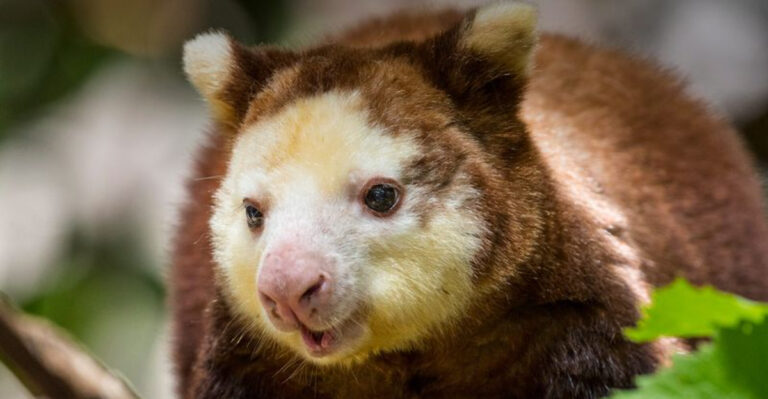These Are The Smallest Spiders Ever Spotted In The U.S.
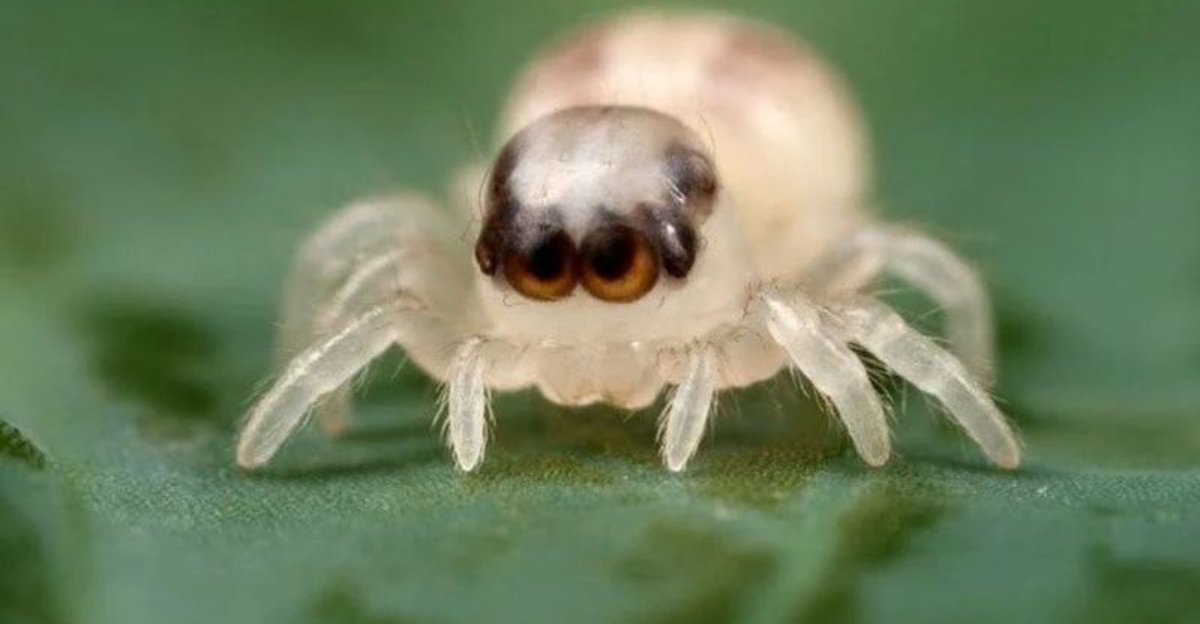
The United States is home to a fascinating array of wildlife, and among this diversity are some of the tiniest spiders ever recorded.
These petite arachnids, often overlooked due to their minuscule size, play significant roles in their ecosystems. From weaving delicate webs to capturing prey with their surprisingly strong silk, each species presents unique characteristics and adaptations.
We explore some of these tiny wonders, detailing their sizes, habitats, and intriguing facts that make them remarkable yet often unnoticed inhabitants of the U.S.
1. Patu Digua
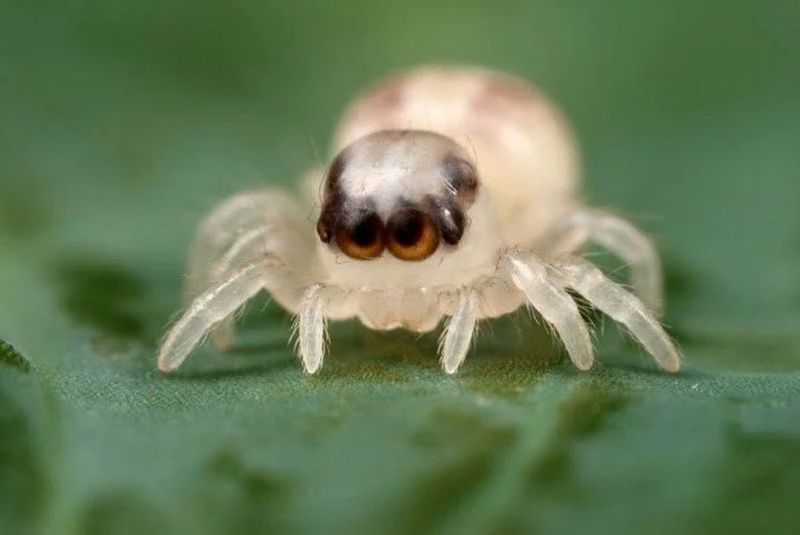
Patu Digua, although natively hailing from South America, has closely related species residing in parts of the U.S. This spider holds the title for being one of the smallest in the world, measuring a mere 0.37 millimeters in males.
Imagine a creature so tiny that it can effortlessly fit on the head of a pin. Its size offers it a unique advantage in its habitat, allowing it to escape predators and access food sources that are unreachable for larger spiders.
Despite its diminutive stature, the Patu Digua plays a crucial role in the ecosystem, controlling insect populations by preying on even tinier creatures.
Observing this spider is like glimpsing into a miniature world, where the laws of nature still apply but on a far smaller scale. Its ability to spin webs and capture prey is as efficient as that of its larger counterparts, showcasing the sophisticated design of nature.
Spotting a Patu Digua is a rare but rewarding experience for arachnid enthusiasts. It requires patience and a keen eye, as these spiders blend seamlessly into their surroundings. Their presence is a testament to the incredible diversity of life that thrives at even the smallest scales.
2. Anapistula Secreta
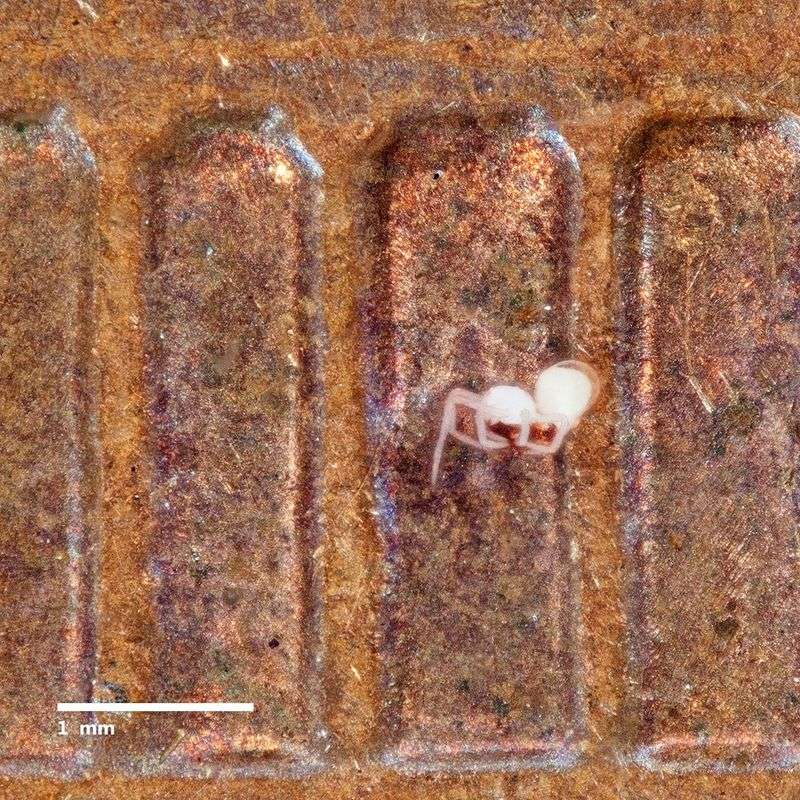
Anapistula secreta is a fascinating example of nature’s intricacy on a miniature scale. Found in the southern regions of the United States, particularly in Florida and Texas, this spider measures a mere 0.5 millimeters. It’s part of the Symphytognathidae family, a group renowned for their small size and delicate construction.
Living in the warm, humid environments of the southern U.S., Anapistula secreta often resides in leaf litter, bark crevices, and other sheltered spots. Its tiny size aids in avoiding predators and allows it to hunt minuscule prey, contributing to the balance of its ecosystem.
This spider’s presence in such a specific niche underscores the complexity and interdependence of natural systems.
Despite its size, Anapistula secreta weaves intricate webs that rival those of its larger relatives. These webs are not only a marvel of engineering but also essential for its survival, providing means to catch prey and create a habitat.
Observers of this tiny creature must often use magnification, but the effort is rewarded by the insight into a hidden world bustling with life.
3. Mysmena Wawuensis
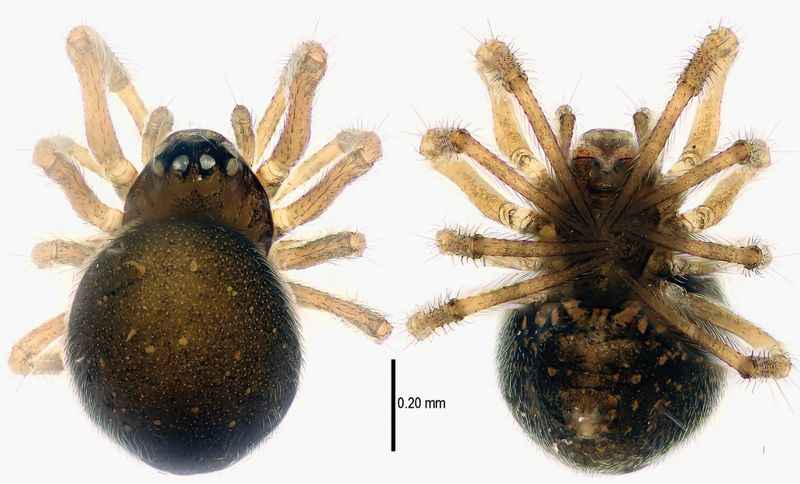
In the forests of the southeastern United States, Mysmena wawuensis represents a marvel of arachnid adaptation. This spider, measuring about 0.75 millimeters, belongs to the Mysmenidae family, a group that includes some of the smallest known orb-weaving spiders.
Mysmena wawuensis thrives in the humid, sheltered environments of southeastern U.S. forests, where it spins its delicate webs.
These webs serve as both a home and a trap for unsuspecting prey. Despite its small size, Mysmena wawuensis plays a big role in controlling insect populations, maintaining ecological balance.
The spider’s orb webs are intricately designed, showcasing a level of sophistication that defies its size. Observing these spiders requires patience and often magnification, but the experience offers a glimpse into the complex interactions within the forest floor’s micro-habitats.
These spiders remind us that size does not determine impact; even the smallest creatures have significant roles in their ecosystems.
4. Microhexura Montivaga (Spruce-Fir Moss Spider)
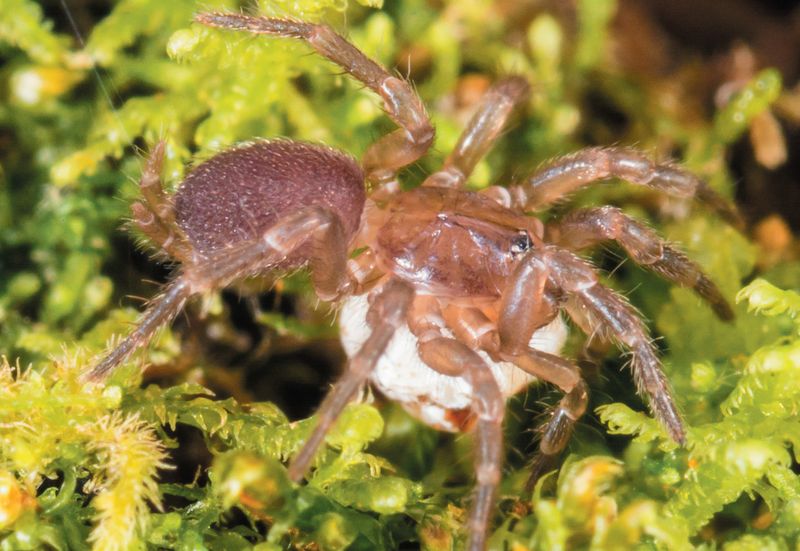
Endemic to the Appalachian Mountains, the Microhexura montivaga, commonly known as the Spruce-fir Moss Spider, is a rare and endangered species. With a size of approximately 1.5 millimeters, it inhabits the cool, moist environments of high-altitude mossy areas in North Carolina and Tennessee.
This spider’s presence is an indicator of a healthy ecosystem, relying on specific environmental conditions found only in its limited habitat.
The mossy terrain provides essential moisture and cover, allowing it to thrive away from potential predators. Unfortunately, habitat loss due to climate change and air pollution has placed this unique spider at risk.
Despite its endangered status, the Spruce-fir Moss Spider is a testament to the resiliency of nature. Conservation efforts focus on protecting its fragile environment, aiming to preserve the spruce-fir forests that this spider calls home.
Observing these spiders in their natural habitat is a rare privilege, offering insights into the biodiversity of the Appalachian region and the intricate balance that sustains such specialized species.
5. Neospintharus Trigonum (Triangle-Weaver Spider)
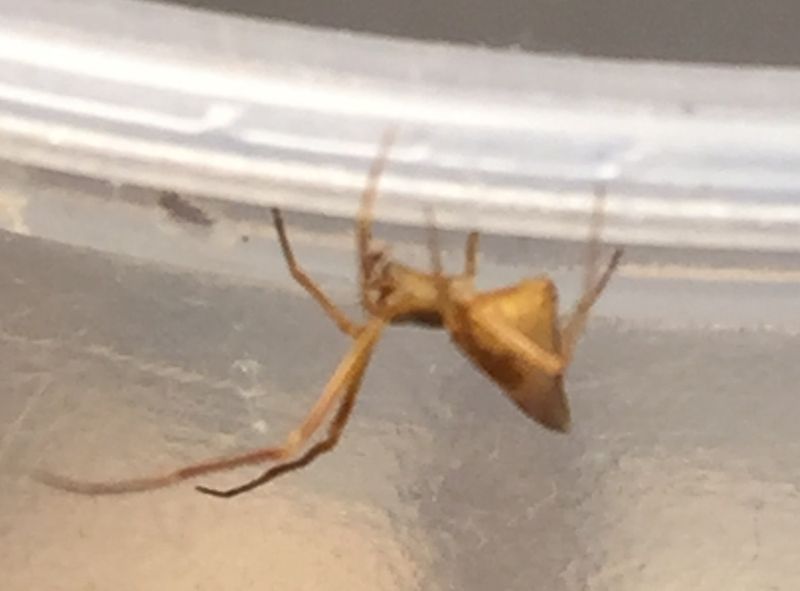
The Neospintharus trigonum, known as the Triangle-Weaver Spider, is an intriguing arachnid native to the eastern and central United States. Measuring around 2 millimeters, this spider is renowned for its distinctive web structure, which features a unique triangular shape.
Unlike traditional orb webs, the Triangle-Weaver Spider’s web is designed for a specific hunting technique.
When prey strikes, the spider uses its strong silk to snap the web shut, capturing the intruder in a swift motion. This innovative method reflects the spider’s adaptability and the evolutionary ingenuity seen across the arachnid world.
Living in wooded areas, Neospintharus trigonum is a master of camouflage, blending seamlessly into its leafy environment. Its role in the ecosystem is significant, as it helps control insect populations, playing its part in the larger web of life.
This spider’s fascinating behavior and unique adaptations offer a window into the dynamic strategies employed by nature’s smallest predators.
6. Walckenaeria Spp. (Dwarf Spiders)
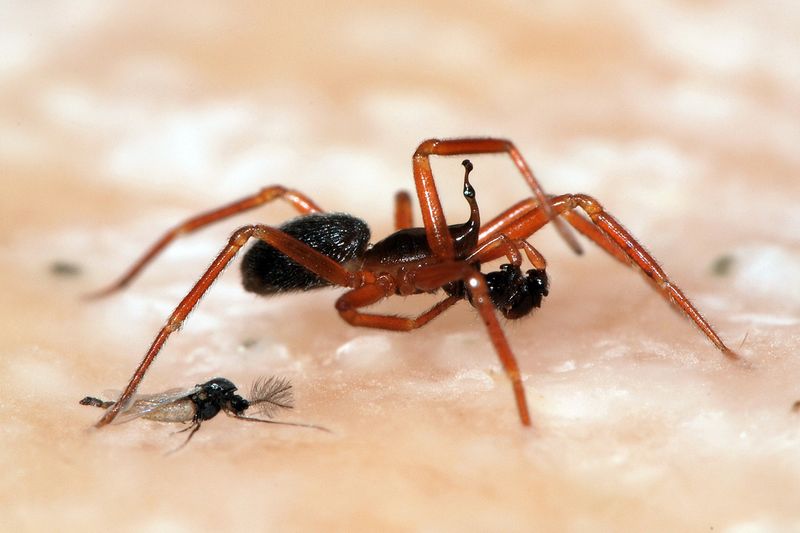
Aptly named for their minute size, Walckenaeria spp., commonly referred to as Dwarf Spiders, are a diverse group found across various regions of the United States.
These spiders, ranging from 1 to 2 millimeters, are especially notable for their peculiar head shapes, which aid in prey capture.
These spiders are typically found in leaf litter, under rocks, or in low vegetation, where they make their homes.
The peculiar cephalothorax shape is not just for show; it serves a functional role in their life cycle, aiding in the creation and maintenance of their webs. These adaptations have made them successful across diverse environments, from woodlands to grasslands.
Dwarf Spiders are integral to controlling pest populations, feeding on insects that might otherwise wreak havoc on local plant life.
Their presence in numerous habitats across the U.S. illustrates the adaptability and resilience of small spiders. Observing these creatures reveals nature’s delicate balance, where even the tiniest species have vital roles within their ecosystems.





